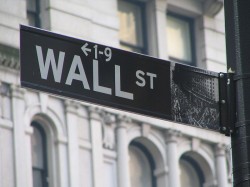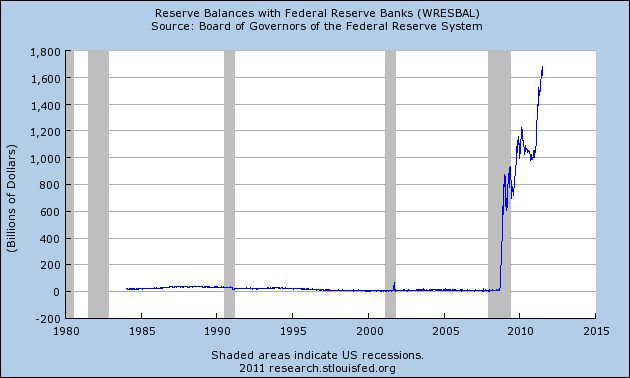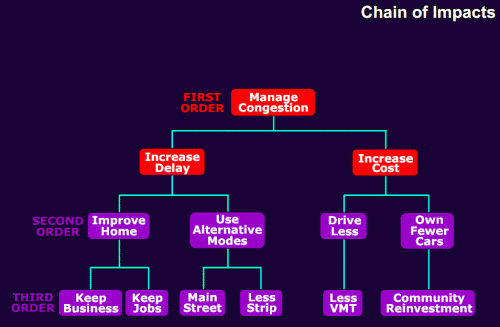
There is wild disagreement about what is causing it, but what most people can agree on is that there is something fundamentally wrong with America. The fabric of American society just does not seem to be as strong as it used to. In fact, many would argue that society is coming apart at the seams. Corruption and decay seem to be everywhere. I spend a lot of time in my other articles blaming a lot of this corruption and decay on politicians, bureaucrats and business leaders, but the reality is that they are only part of the story. The truth is that those who are leading us are a reflection of what we have become as a nation. If you got rid of all of our corrupt leaders that would not suddenly “fix” this country. Millions of ordinary Americans have become deeply corrupt as well. The kinds of things that you are about to read about below were very rare in past generations. Society is falling apart all around us and we haven’t even seen the complete collapse of the U.S. economy yet.
A lot of people like to blame the increasingly bizarre behavior of the American people on the economy, but the reality is that things are not nearly as bad as they are eventually going to be. Yes, the U.S. “Misery Index” recently hit
a 28 year high. Tens of millions of American families are deeply suffering.
Unemployment is rampant and unprecedented numbers of Americans have been getting kicked out of their homes.
But that is nothing compared to what is coming.
So what is America going to look like when true economic suffering comes along?
That is something to think about.
A lot of the items in the list below may seem easy to dismiss as “isolated incidents”. But when you start examining patterns of behavior over an extended period of time, certain trends begin to emerge. America is become a very cruel place. The love of most people seems to be growing cold. What some people are willing to do for a little bit of money or just because someone has “pissed them off” is absolutely stunning. The America of today is fundamentally different from the America of past generations.
We have changed, and not for the better.
The following are 20 signs that the fabric of American society is coming apart at the seams…..
#1 A 17-year-old Florida teen is being accused
of killing his parents with a hammer, hiding their bodies in the master bedroom, and then inviting dozens of people over for a massive house party.
#2 What is it with 17-year-olds? Another 17-year-old has been charged with putting a plastic bag over the head of his mother and
choking her to death with a belt. His two brothers just stood by and watched while this happened. Apparently the 17-year-old was infuriated because his mother wanted them to play a game of Yahtzee with her.
#3 The largest school cheating scandal in the history of the United States was recently uncovered in the Atlanta area. Dozens of teachers and principles were involved
according to a recently released 413 page report….
More than three quarters of the 56 schools investigated cheated on a 2009 standardized state test, with 178 educators implicated, including 38 principals. Eighty-two teachers confessed to erasing students’ answers and correcting tests. The report says widespread cheating has occurred since at least 2001 and that orders to cheat came from the top.
#4 A Vancouver, Washington woman has been charged with trying to sell her newborn baby
in front of a Taco Bell. Apparently she was hoping to get somewhere between $500 and $5000 for the baby.
#5 In the United States today, if you don’t show cops “proper respect” there is a good chance that you are going to get tazed. Just check out
this disturbing video of an incident that recently happened in Alabama.
#6 A 48-year-old woman in California was recently arrested after she drugged her husband, chopped off his manhood and threw it into the garbage disposal.
#7 In the Dallas area, five people (including a pregnant woman)
were trampled while lying on the ground as thousands of desperate people madly dashed to get into line to get on a waiting list for rental assistance vouchers.
#8 A 35-year-old New York man that has been charged with “
kidnapping, killing and dismembering an 8-year-old boy” says that he “hears voices” and he has been ordered to undergo a psychological evaluation.
#9 There has been a rash of car robberies in the Atlanta area recently. Just a couple of nights ago,
more than 30 cars were broken into in a single night in south Buckhead.
#10 All over the United States this summer, thieves are stealing
just about anything they can get their hands on. People are stealing air conditioners, copper wiring, restaurant furniture, metal drain covers and even hair extensions.
#11 In Woodstock, Georgia a 61-year-old man reportedly promised to give a 17-year-old boy money if he would do certain “things” for the man. Well, it turns out that the 61-year-old man ended up
setting the teen on fire….
A 61-year-old man has been arrested on charges of aggravated battery, cruelty to children, false imprisonment, and solicitation of sodomy after he set a 17-year-old boy on fire in Woodstock.
#12 In Washington state, a 23-year-old woman is accused of dumping her newborn baby
into a trashcan at the hospital. When a nurse finally found the plastic bag with the baby boy inside of it, the child was blue in the face from a lack of oxygen. Fortunately, the baby survived the ordeal.
#13 In another story from Washington state, a man that is being charged with producing child porn is being allowed to watch that porn all he wants while he is in prison because he is acting as his own lawyer and needs to have “
access to the evidence“….
So because he’s acting as his own lawyer, he gets full access to the evidence against him. Which means that as he prepares for trial, a private room has been set up in the jail where Gilbert can watch the full 30-hour archives of his own child porn collection.
#14 The National Retail Federation says that “inventory loss” for retail stores
was up 11% last year. Most of the “inventory loss” is attributed to such things as shoplifting and employee theft.
#15 In Minnesota recently, a mob of teen girls brutally pummeled a mother and her two daughters
until they were black and blue. Apparently the mob of teen girls was enraged over a pair of missing sunglasses.
#16 One of the hot new trends for young males is to play the “
knockout game“. In this “game”, a group of young men picks out an innocent bystander and the first one to knock that person out is the “winner”.
#17 Prior to 2011, most Americans had never even heard of “
mob robberies“. Today, they have made headline news all over the nation.
#18 In the San Francisco area recently, fire crews and police
just stood on the shore and watched as a suicidal 50-year-old man slowly drowned to death in the San Francisco Bay.
#19 Meanwhile, the federal government continues to waste money on some of the most bizarre things imaginable. For example, the federal government actually gave money to the National Institutes of Health to study the effect that the size of “
a certain part of the body” has on the sex lives of gay men. Can anyone think of a reason why the federal government would want to throw money away on such frivolous studies when millions of Americans can’t even find jobs right now?
#20 Many believe that a big reason for all of this chaos in America today is the decline of the American family. In 1960, married couples accounted for 75 percent of all households in America. Today, they account
for just 48 percentof all households.
Whatever your political or religious philosophy is, hopefully you can agree that America is in trouble. Every single day, there are more shocking revelations about the corruption and the decay that are spreading throughout this nation.
Sadly, instead of coming together to work on some solutions to our growing problems, Americans are becoming more divided than ever.
The mainstream media teaches us that our “opponents” are those that belong to political, social or religious groups that are different from our own. They love to divide us and play us off against each other. Everywhere you look in America, hate is growing.
But hatred is never the answer. Yes, we should always stand up for what we believe is right, but we can do that and still love one another at the same time.
Unfortunately, as America continues to come apart at the seams we are probably going to see this country become even more divided.
United we stand, divided we fall – you make the call America.


























